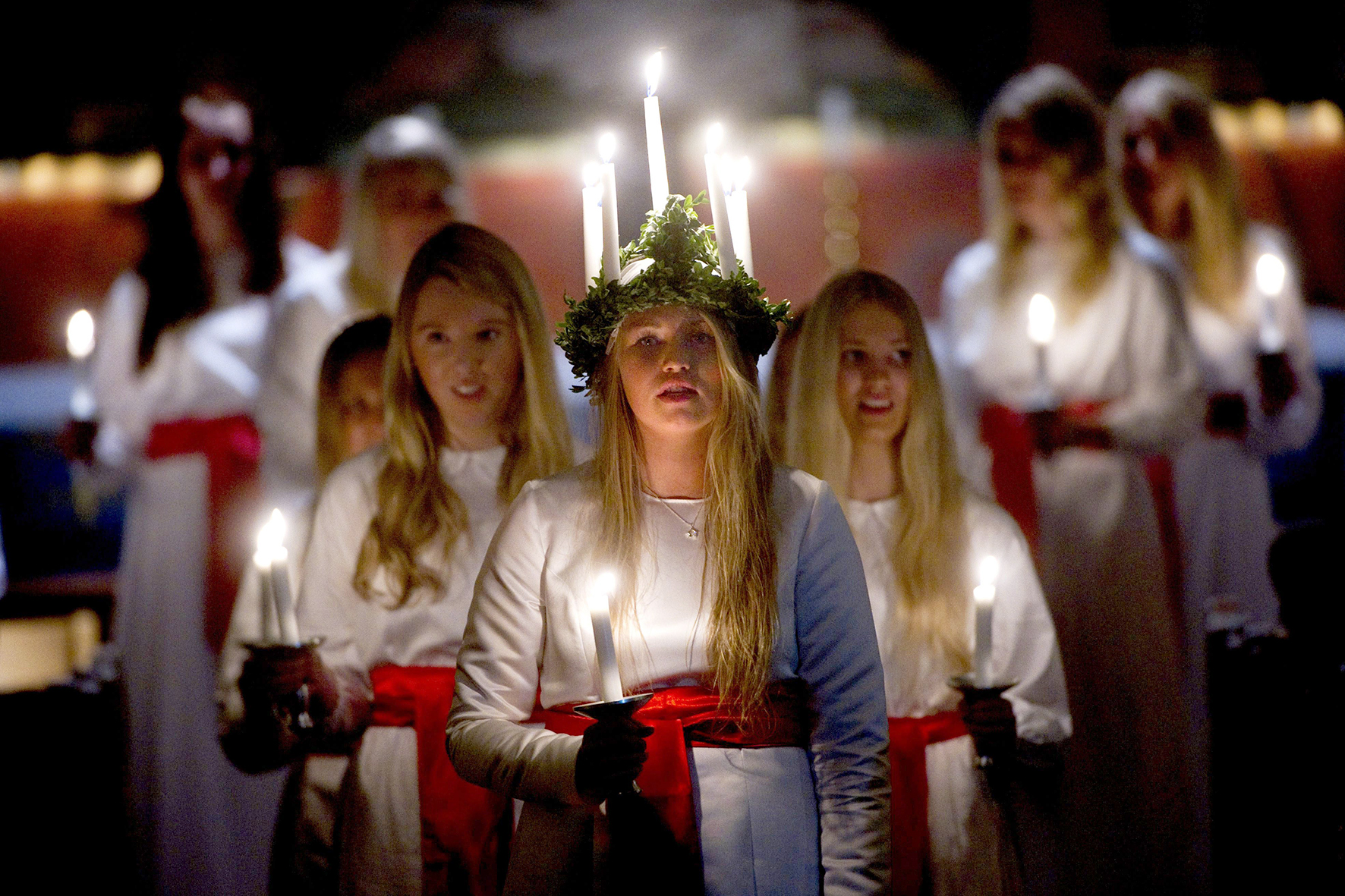Traditions
From Sweden to Norway, passing by Finland and other Countries with cold climate, the young martyr of Sicilian origins is worshipped by Catholics and Protestants alike. During the coming week-end the Saint will be celebrated with processions of young women, chants and nursery rhymes, traditional sweets and liturgical celebrations

In this period of the year, some areas in the north of the world never or almost never see the light of the day, and night extends for just a few hours. Dusk will be enlightened on December 13 by Saint Lucy, the young martyr of Sicilian origins, loved and venerated for bringing light in the darkness that envelops everything.
From Sweden to other Countries. In the Julian calendar the “night of St. Lucy coincided with the winter solstice (which falls on December 21 in the Gregorian calendar), the longest night of the year, which according to Nordic traditions was populated by evil spirits, when everybody had to stay inside their homes and finish all open-air work before sunset.
In the longest darkest time of the year, Christmas tales of gnomes and trolls passing from home to home to make sure everything was ready to welcome the imminent birth of the Child Jesus incorporated elements of pagan folklore with Catholic devotion to St. Lucy, the third-century young woman from Siracuse, died as a martyr for her faith in Jesus Christ
Since ancient times the echo of her story unexpectedly reverberated up to Northern Europe, surviving the Protestant Reformation and secularization. From Sweden, where the tradition of the Feast of St. Lucy was consolidated, it extended to neighbouring countries in the course of the 20th century, following the flows of migrants from communities of Swedish origin.
In Finland and Norway. Tradition has it that on 13 December, in the early morning, a procession of young girls dressed in a white gown with a red sash proceed holding lit candles in schools, churches and sometimes also along city streets. A young girl previously elected as the young St. Lucy heads the procession with a crown of candles on her head.
Traditions tell that the young, wealthy Lucy would go out at night to avoid detection and distribute food to the poor, wearing a crown of candles on her head to keep her hands free to help them.
The white gown is a reminder that Lucy died as a virgin, and it recalls the white robes of the baptized; the red sash represents the blood of her martyrdom. The procession symbolizes bringing the light of Christianity throughout world darkness. This aspect is especially highlighted in the Finnish celebration: in Helsinki, for example, on Sunday Lucy will be crowned in the Lutheran cathedral to later come out of the church with her procession to bring light in the city centre. In Norway the procession has lost much of its spiritual significance and has remained as a spectacular event for children and the elderly. Celebrations and prayers inspired by St. Lucy will be held also in other nations, such as Denmark, Russia and Iceland.
Neapolitan tones reach out to Stockholm and Linköping. Another fundamental aspect of this procession – and of the entire day – are the chants. The young women proceed singing the Neapolitan song of the boat and the silver star shimmering on the sea, in the various linguistic versions of the tune, all of which focus on the contrast between light and darkness.
It’s the hymn of this feast, sung by children in kindergartens, who on that day perform in front of their parents, as well as by famed and acclaimed choirs.
Concerts resound in all major churches, Protestant and Catholic alike. It is said that the best choirs perform in Stockholm and Linköping, and while in the past they were female choirs, today also male singers are admitted, and young men dressed in white also take part in the procession accompanying Lucy, that continues being represented by a young girl.
Gingerbread and mulled wine. Finally, the ritual is crowned by sweets. After the chants, the young women taking part in the procession distribute gingerbread cookies (in Finland and Norway sweet pancakes shaped like a cat’s tail filled with saffron and raisins). The food ritual often includes mulled wine. Since this year the feast falls on a Sunday, schools had to pre-schedule the celebrations to Friday, December 11 or Saturday Dec. 12, thus a long week-end will be dedicated to Saint Lucy, seeking and celebrating light: given its nearness to the winter solstice and given the current circumstances that are dark under many, light is sought for and needed more than ever.